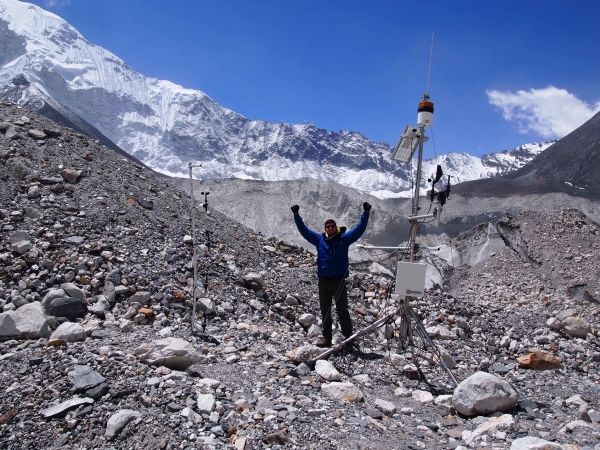A large-scale research project at the University of Alaska Fairbanks Geophysical Institute has revealed insight into the relationship between surface debris on glaciers and the rate at which they melt.
The work is the first global assessment of Earth’s 92,033 debris-covered glaciers and shows that debris, taken as a whole, substantially reduces glacier mass loss.
The results will affect sea level rise calculations and allow for improved assessment of hazards faced by nearby communities.
“This is the first step to enable us to start projecting how these debris-covered glaciers are going to evolve in the future and how they’re going to affect glacial runoff and sea level rise,” said glaciologist David Rounce, the lead author of a paper published April 28 in Geophysical Research Letters, a publication of the American Geophysical Union.
Read more at University of Alaska Fairbanks
Image: David Rounce at Imja Glacier in Nepal 2017. The glacier was the site of his Ph.D work and where he did a lot of remote sensing work as part of NASA's High Mountain Asia Team. (Photo Courtesy David Rounce)


